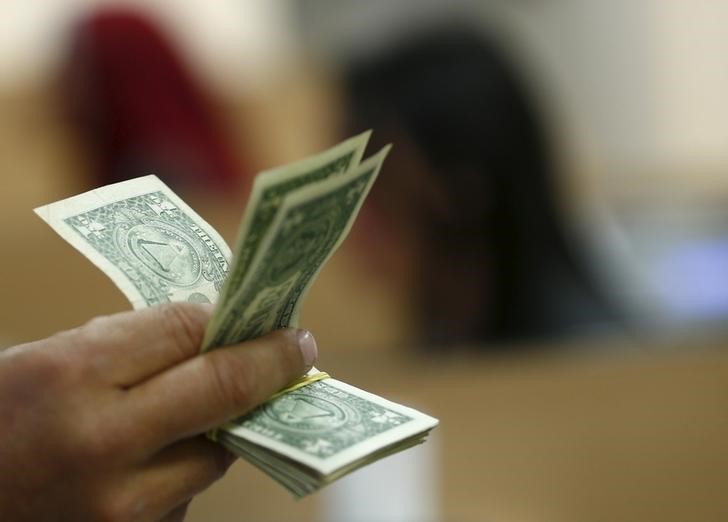By Wayne Cole
SYDNEY, June 4 (Reuters) - The Australian dollar held its ground on Tuesday after the country's central bank delivered a well flagged cut in interest rates, while investors were already wagering on even larger reductions in U.S. rates over the next year or so.
The Aussie dollar AUD=D3 was a shade softer at $0.6968, having gained 0.6% overnight to as high as $0.6983 as its U.S. counterpart came under broad pressure.
There is more resistance in the $0.7000/20 zone, while technical support lies at May's five-month low of $0.6865, a level that has become a major chart bulwark.
The New Zealand dollar NZD=D3 was also on hold at $0.6584, after rallying 0.9% overnight as the U.S. currency retreated.
The Reserve Bank of Australia (RBA) cut its cash rate a quarter of a percentage point to 1.25% as widely expected, the first easing since mid-2016 as it tries to revive a stumbling economy.
Miserly wage growth and sliding home prices have taken a heavy toll on consumption, as illustrated by data showing retail sales unexpectedly fell 0.1% in April. central bank also left the door wide open to a further move, with Governor Philip Lowe saying they would be watching closely to see employment picked up as desired.
"Given the shift in stance we now expect to see a second cut in August," said Sarah Hunter, chief economist at BIS Oxford Economics.
"And with global conditions deteriorating markedly and the U.S. heading for a sharper than anticipated slowdown as a result of disruption caused by the tariffs imposed on China and Mexico, we think it's likely that they will cut for a third time this year in November."
Futures 0#YIB: imply around a 76% probability of a cut to 1% in August, and a 50% chance of another move to 0.75% by the middle of next year.
While speculation of an easing has been building in Australia for months now, U.S. markets have only recently begun to more aggressively price in Federal Reserve cuts. Those expectations were bolstered last week when U.S. President Donald Trump threatened tariffs against Mexico, broadening his trade war and fanning worries about the global economy.
In just a few sessions Fed fund futures 0#FF: have gone from pricing in a rate of 2.10% by December, to implying just 1.78%.
No less than 100 basis points of U.S. easing is implied by August next year, compared with 75 basis points in Australia.
Yields on two-year Treasuries US2YT=RR have dived 28 basis points in the past week to reach to 1.84%, while Australian yields AU2YT=RR have held steady around 1.17%.
The narrowing in spreads has squeezed speculators who have for weeks been borrowing Aussie and kiwi to buy U.S. dollars.
"Short positioning in AUD and NZD and near extreme long USD positioning, goes a long way to explaining the recovery in the antipodean currencies, together with the depressing USD impact of fast falling U.S. rates," said Ray Attrill, head of FX strategy at NAB.
"We'd also note that a lot of bad news is 'in the price' according to our short term fair value models which are just above $0.6900."
Supporting the Aussie have been high prices for iron ore, Australia's biggest export earner, which helped deliver a record trade surplus of A$13.6 billion last quarter.
That in turn shrank the current account deficit to a negligible 0.6 percent of GDP, the smallest since 1979. (Editing by Sam Holmes)
